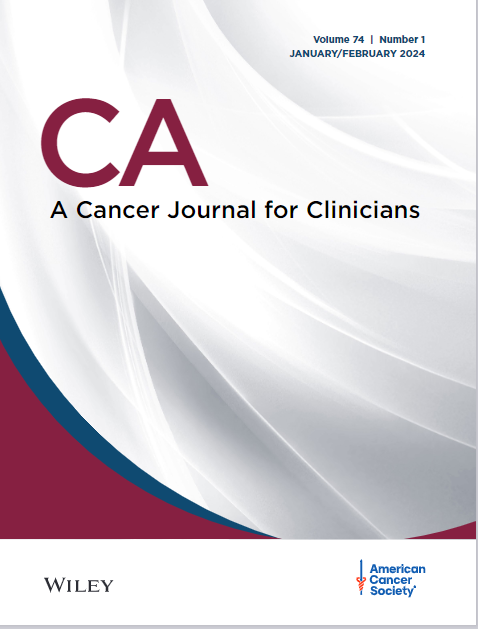Talking with adolescent and young adult cancer survivors about health after cancer: A review and communication guide for clinicians.
IF 232.4
1区 医学
Q1 ONCOLOGY
引用次数: 0
Abstract
Adolescent and young adult (AYA) cancer survivors represent a vulnerable population in cancer care and survivorship. AYA survivors are a heterogeneous group that includes people between the ages of 15 and 39 years who were treated for cancer during their childhood or AYA years, at which time they had variable agency and may have received cancer care in pediatric or adult settings. AYA survivors experience one or multiple health care transitions, moving from active oncology to posttreatment survivorship and/or from pediatric to adult care. Clinician communication that centers the needs and preferences of the AYA and their family (parent, partner, other support person) is a therapeutic tool that can support AYAs in these health care transitions and promote AYA engagement in their care. In this article, the authors review clinician communication practices through the lens of AYAs' and families' lived experiences with a focus on the initial diagnosis and treatment phase, completion of treatment, and throughout posttreatment survivorship care. Specific communication topics relevant to survivorship encompass managing uncertainty and fear of cancer recurrence, discussing treatment-related future health risks, and supporting self-management and engagement in care. Best practices for clinician communication include maintaining openness, compassion, and flexibility to re-assess and adapt communication styles as an AYA cancer survivors' needs, concerns, and preferences change over time.与青少年和年轻的癌症幸存者谈论癌症后的健康:临床医生的回顾和交流指南。
青少年和年轻成人(AYA)癌症幸存者是癌症护理和幸存者中的弱势群体。AYA幸存者是一个异质群体,包括年龄在15至39岁之间的人,他们在童年或AYA期间接受过癌症治疗,当时他们有不同的代理,可能在儿科或成人环境中接受过癌症治疗。AYA幸存者经历一次或多次医疗保健转变,从活跃的肿瘤学转移到治疗后的幸存者和/或从儿科转移到成人护理。临床医生的沟通以AYA及其家人(父母、伴侣、其他支持人员)的需求和偏好为中心,是一种治疗工具,可以在这些医疗保健转变中支持AYA,并促进AYA参与他们的护理。在这篇文章中,作者回顾了临床医生的沟通实践,通过AYAs和家庭的生活经验,重点是最初的诊断和治疗阶段,治疗的完成,以及整个治疗后的生存护理。与生存相关的具体沟通主题包括管理不确定性和对癌症复发的恐惧,讨论与治疗相关的未来健康风险,以及支持自我管理和参与护理。临床医生沟通的最佳实践包括保持开放、同情和灵活性,以重新评估和适应沟通方式,因为AYA癌症幸存者的需求、关注点和偏好会随着时间的推移而变化。
本文章由计算机程序翻译,如有差异,请以英文原文为准。
求助全文
约1分钟内获得全文
求助全文
来源期刊
CiteScore
873.20
自引率
0.10%
发文量
51
审稿时长
1 months
期刊介绍:
CA: A Cancer Journal for Clinicians" has been published by the American Cancer Society since 1950, making it one of the oldest peer-reviewed journals in oncology. It maintains the highest impact factor among all ISI-ranked journals. The journal effectively reaches a broad and diverse audience of health professionals, offering a unique platform to disseminate information on cancer prevention, early detection, various treatment modalities, palliative care, advocacy matters, quality-of-life topics, and more. As the premier journal of the American Cancer Society, it publishes mission-driven content that significantly influences patient care.

 求助内容:
求助内容: 应助结果提醒方式:
应助结果提醒方式:


